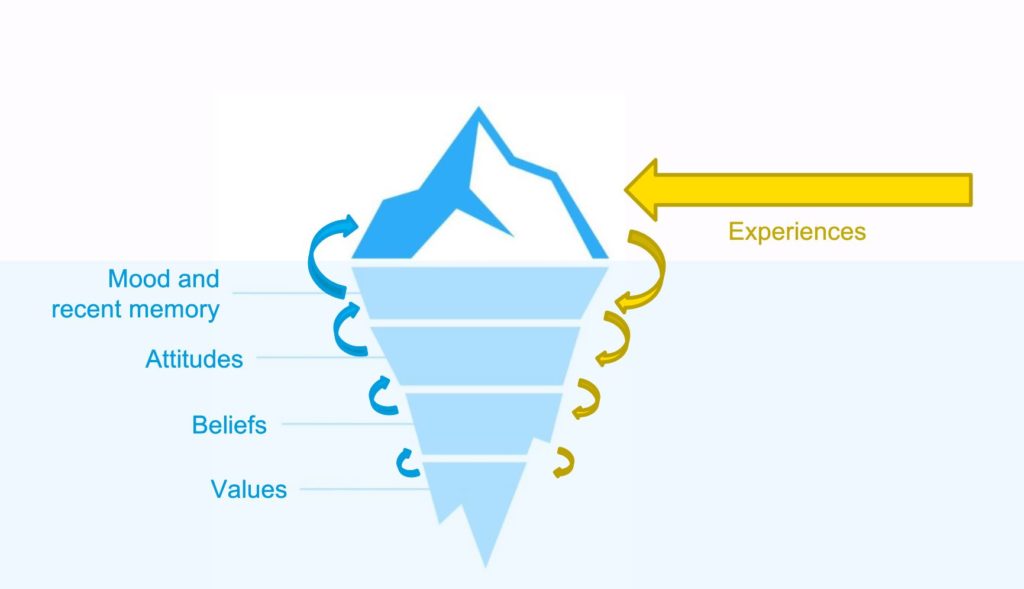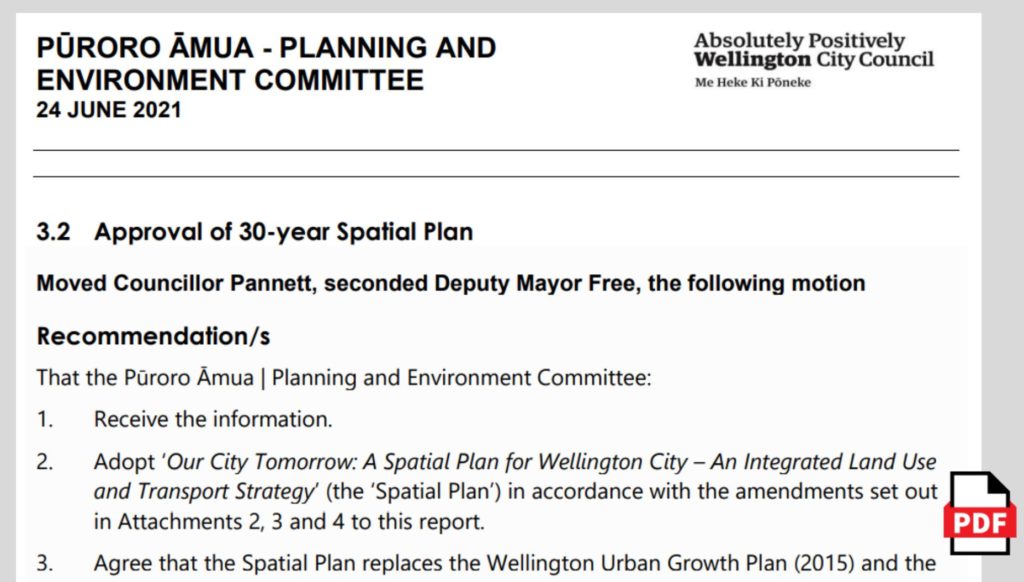This was originally a presentation at the 2021/2022 ALGIM Conference
My family moved from Taupō to Wellington when I was 9. Once a fortnight my mum would drive us up State Highway 1 in our van for the weekend while Dad stayed in Wellington to work.
On one occasion, just outside of Levin, a rock flicked up from a passing truck and shattered our windscreen. Mum pulled over and punched a hole through the glass and kept driving. Then it starting raining. Mum got wet, but kept driving. Then it got dark. We had no choice but to stop at Taihape and pull into the only motel we could find.

Mum was soaking wet, and the motel man saw the state of the van as we pulled in. Tired, grumpy and anxious Mum explained we needed a place to stay but we didn’t have any money.
Without saying a word, the motel man opened the cash register and took out $80 and gave it to mum. He said we’d probably had a hard day and needed some dinner. He told Mum she could balance the bill the next time we were driving through.
To this day, whenever I drive through Taihape I think of hospitality, kindness and trust. I make a point of stopping there if I’m hungry. My family still talk about it.
Trust is the currency of the public sector
How do you judge how you’re doing?
A company may look at their balance sheet, or customer numbers, or projected profits. But what is the currency of public sector organisations? What is the best proxy metric for our success? the thing that legitimises us as an organisation, to continue to pursue our mission?
The answer is trust.
My first proper job was at the Public Services Commission (née State Services Commission). I was lucky enough to sit next to the team that researched what makes people trust or distrust the public sector.
They found that there was a very strong overlap between satisfaction with service experiences and trust . If a public servant did what they said they were going to do, then as a consequence people trusted the organisation would do what it had said it would do.
Trust takes time and effort to build. And you can lose it fast.
When we make a commitment and say what we’re going to do, and then do it, it builds trust. When we repeat this again and again, it cumulatively builds more trust.
Trust in our organisations is essential for democracy. Without trust, we loose legitimacy.
All of our interactions are cumulative. And they matter.

When I was 9, I had very little preconceived notion about the town of Taihape. That one day, I learnt Taihape is the hospitality capital of New Zealand. I learnt how powerful it is to lend a complete stranger $80.
If we have strong existing perceptions, attitudes, beliefs – these take longer to change. But they can.
The OECD themselves have been measuring trust in governments and public institutions for the last 10 years. Through their work, they’ve found there are five underlying elements that drive trust in governments and public institutions:

- openness
- integrity
- fairness
- responsiveness
- reliability.
The first three are values, the last two are competencies.
If they look familiar, its because they have big overlaps with the fundamentals of good customer service.
Trust in public institutions is declining
We live in a crazy age of misinformation and distrust.
In the early 2000s I was absolutely a techno-optimists. I was so confident that the internet and the web were unstoppable forces for good and connection. In the last 10 years, my opinion has shifted. I am now at best ambivalent, and in my worst moments I am a tecno-sceptic.

Why the Past 10 Years of American Life Have Been Uniquely Stupid
“In the first decade of the new century, social media was widely believed to be a boon to democracy
The high point of techno-democratic optimism was arguably 2011, a year that began with the Arab Spring and ended with the global Occupy movement. That is also when Google Translate became available on virtually all smartphones
[…]
Social media rewired the way we spread and consume information – it started to train users to spend more time performing and less time connecting.To social media providers learnt that content that provoked strong emotional responses were much more engaging.
[…]
Ultimately social media has proven corrosive to trust. Trust in governments, news media, and people and institutions in general.
[…]
When citizens lose trust, then every decision becomes contested
[…]
Social media has weakened social capital, weakened our strong institutions, and weakened our shared stories. These are the forces that collectively bind together successful democracies”
https://www.theatlantic.com/magazine/archive/2022/05/social-media-democracy-trust-babel/629369/
Social media polarises. It amplifies the extremes and silences the boring middle.
So what is the answer in this increasingly reactionary and heated media landscape?
In Dr. Jess Berentson-Shaw’s A Matter of Fact. Talking Truth in a Post-truth World she writes:
The most useful tool is that of listening, building relationships and connecting with people […] The irony is that talking truth actually involves not talking at all. It is about listening

Relationships and connections with people are more important than ever.
The way we behave, and the way our staff interact with citizens builds these relationships shapes our reputation.
While councils are definitely in the busy of transactional services, we also have long-term and complex relationships with the public.
Activities at Wellington City Council to increase connections, relationships and trust
1. Our Customer Approach
When Barbara McKerrow became our CEO in 2020, she emphasised a customer-service mindset across the organisation. She wanted a unifying way to tackle delivering our diverse range of services.
We worked with service teams from across the council, ran workshops and boiled down the fundamentals of what Our Customer Approach is.
We ended up with this model:
Our Customer Approach has four main elements and looks like a hamburger.
- organisational values are overarching across everything
- operating environment is underpinning
- and the most interesting bits are in the middle: …the relationship between service delivery and service improvement.
Service Delivery Principles: What does good customer service look like?
Service Improvement mindset: What should we be thinking about when improving services?
The doing on the right, and the thinking on the left. The dancefloor on the right, the balcony on the left.
We consciously distinguish between the act of delivery from design or improvement – there is thinking and there is doing; there is planning, and there is executing. These modes happen alongside each other, and inform each other.
Maybe you already have a similar ritual in your team – a fortnightly retrospective where team members share opportunities for improvements and then pick a few ideas to test together – that’s a simple example of this full cycle in action.
Principles over rules
Rules must be complied with. Principles force you to think. We trust our teams to use principles to inform their judgements. Judgements about what their choices will mean not just for the person in front of them, but for the city and other people — past, present and future — impacted by our services. It means considering tensions, practicalities and limits, and doing the best we can. Using our hands, heads, AND hearts to make a conscious choice.
Principles means not blindly following rules.
Don’t put rules over principles
Wal-Mart is a big America retailer – kind of like the Warehouse crossed with a Pak’n’Save. In the late 90s they tried to open hundreds of stores in Germany.

Wal-Mart’s plan was to compete on price and customer service. Many of the existing discount supermarket chains often do not provide good customer service.
Wal-Mart implemented the “ten foot rule”. They ensured a service employee offered some help to most customers every ten feet of their physical journey.
German customers who do their grocery shopping in discount supermarket chains are used to self-service. They do not necessarily expect to talk with employees. The “ten foot rule” was perceived as annoying.
Wal-Mart also imported the idea of placing a “greeter” at the entrance to the store. Again, German customers were not used to this custom, and they didn’t like this. In America, it’s not uncommon for retail assistants to get all chatty and friendly with the customers. Walmart decided to train its German employees to do the same. The cashiers were told to smile at customers during checkout. Smiling at random strangers and acting like you know them isn’t really German.
Walmart’s superficial, vacuous, and facile customer service was seen as creepy and weird by the Germans.
In 2006, after 9 years and losing around $1 billion, Walmart had to leave Germany.
Walmart’s American customer service tactics did not make sense in Germany. Context matters. The way a librarian helps a library visitor should be very different to how a planner deals with a resource consent pre-application meeting. The way a parking warden deals with an irritated tourist should be different to how a park ranger speaks to a volunteer group on a planting working-bee.
2. Green Vest Phone Guest: Making service interactions more visible to staff

Many staff at the council work in homogenous siloed teams. This makes it both harder for them to see a richer perspective of a citizen’s world (and build a strong sense of empathy) but also can make it hard to emphathise and see opportunities to collaborate across teams.
So now we now have structured booking system for any staff member to sit-in on calls in the Contact Centre. The participant gets to wear a green vest during their session, the get a BINGO card for different calls they might hear, and we post photos on Yammer, which leads to more people signing up. It humanises the callers and the staff, and builds connections across service teams, and reveals the breadth of services the Council provides
The only challenge now is capacity to deal with demand!
3. Transparent Council Decision Making

Right now, if citizens want to read Council minutes, agendas, decisions, or resolutions they need to sift through piles of unlinked PDFs. We are defining a new data structure for all of this and will turn it all into much more usable, linked systems of web pages, so citizens can keep track of the things that matter to them and track progress on agreed actions.
We will pull the key information together and on the paper that went to council and show what was decided and what actions are being taken.




Each paper is shown with it’s key details and an overview of the content
There are links through to sources of more detailed information, such as the full paper, minutes, agenda and the recording of the meeting.
A breakdown of the decisions showing what has been acted on and what is still in progress., which includes commentary from Council officers with important progress updates.
We will show how a paper links to other papers on the same topic so that readers can see the history of a topic
We will show how a paper links to other papers on the same topic so that readers can see the history of a topic
Finally we will give the option for people to follow up, or sign up for notifications.
